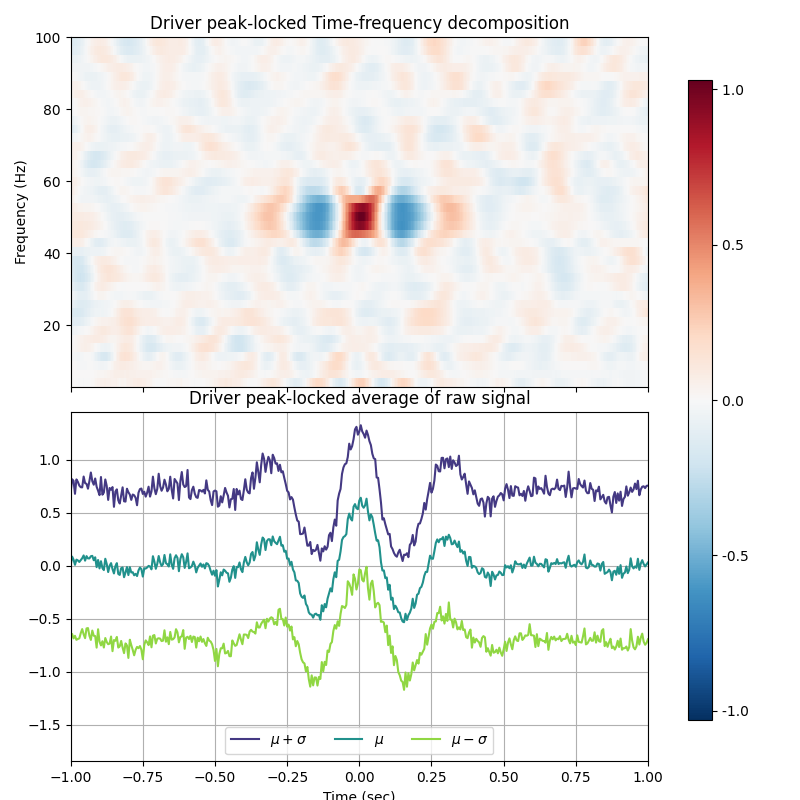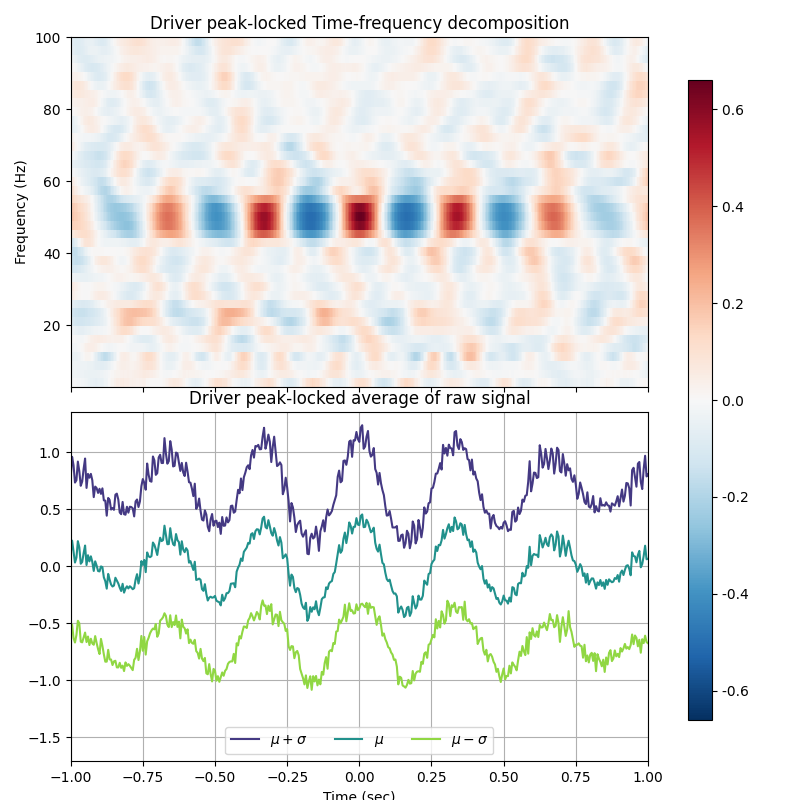Note
Click here to download the full example code
Peak-locking¶
The peaks are extracted from the low frequency band, then both the raw-signal and a time-frequency representation are peak-locked and averaged.
Note the effect of the bandwidth low_fq_width on the number of oscillations in the results.
import matplotlib.pyplot as plt
from pactools import PeakLocking
from pactools import simulate_pac
Let’s first create an artificial signal with PAC.
fs = 200. # Hz
high_fq = 50.0 # Hz
low_fq = 3.0 # Hz
low_fq_width = 2.0 # Hz
n_points = 10000
noise_level = 0.4
t_plot = 2.0 # sec
signal = simulate_pac(n_points=n_points, fs=fs, high_fq=high_fq, low_fq=low_fq,
low_fq_width=low_fq_width, noise_level=noise_level,
random_state=0)
Plot the amplitude of each frequency, locked with the peak of the slow wave
estimator = PeakLocking(fs=fs, low_fq=low_fq, low_fq_width=2.0, t_plot=t_plot)
estimator.fit(signal)
estimator.plot()
estimator = PeakLocking(fs=fs, low_fq=low_fq, low_fq_width=0.5, t_plot=t_plot)
estimator.fit(signal)
estimator.plot()
plt.show()
Out:
/home/tom/work/github/pactools/examples/plot_peak_locking.py:43: UserWarning: Matplotlib is currently using agg, which is a non-GUI backend, so cannot show the figure.
plt.show()
Total running time of the script: ( 0 minutes 1.300 seconds)

